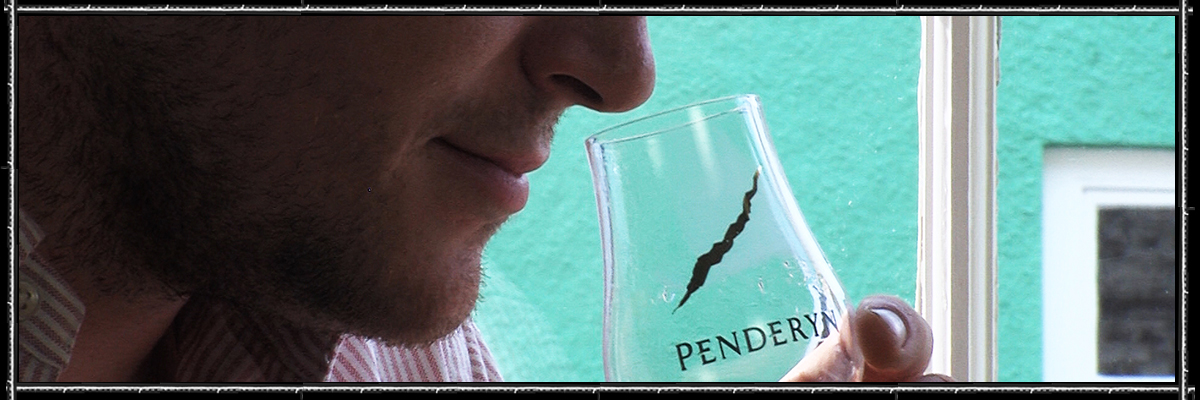
NOSING AND TASTING
'Give the glass a little cwtch...'
To those not fully conversant with the idea of ‘nosing’ whisky, it may seem a little eccentric. Isn’t whisky a drink? But a master distiller’s ability to judge the quality of a whisky by sense of smell alone or when the malts in the cask are ready for bottling has always been a distinctive part of whisky culture.
Just as a trained ear can pick out the sounds of individual instruments in an orchestra, the trained ‘nose’ works in much the same way and can detect the individual elements of flavour in a complex whisky.
Although some people have more sensitive noses, nosing is not an art restricted to an exclusive club and the beginner to whisky can soon learn to detect the basic elements. Remember – don’t be disappointed if you can’t instantly locate almond, bergamot and cinnamon, for example. Just start by enjoying the overall fragrances in harmony together.
Most professional tasters nose the whisky ‘straight’ for what they call the ‘nose feel’ effect and then add about half as much pure natural water at room temperature. This helps to release the volatile aromas in the whisky and greatly aids the identification of individual notes.
Stage 1
Appearance: Note the colour and brightness. Cup the glass in your hands and give it a little ‘cwtch’ as we say in Wales. (‘Cwtch’ means a hug in Welsh.)
Stage 2
The nose: It is always difficult to put words to aromas. First, what is the effect on your nose? Is the smell pungent, prickly, warming, drying? Second, how ‘forward’ or ‘shy’ is it? Don’t inhale too deeply, as the strength of the alcohol vapours may dull your senses, causing ‘palate fade’. Third, work through this checklist of aroma groups:
- Cereal notes: malt, toast, vegetable
- Ester notes: fragrant, fruity, flowery
- Aldehyde notes: hay, leaves, flowers
- Sweet notes: honey, vanilla
- Wood Notes: new wood, resin, old wood
- Oily Notes: nutty, buttery, fatty
Stage 3
Primary taste: What are the initial flavours you pick up as the liquid slides over your taste buds? Are they sweet, sour, salty, bitter?
Stage 4
Back of palate: As you swallow, is the back-palate flavour consistent with that promised by the bouquet and first taste? Or is it beginning to show different characteristics?
Stage 5
Aftertaste: Is it a short finish, a rapid fade, or does the flavour linger like a summer sunset over the Brecon Beacons? Welsh malts will linger on your taste buds.
Discerning whisky drinkers will know and appreciate this extra dimension as a prelude to tasting. While there are only four basic flavours which can be detect by taste; bitter, sour, sweet and salt, the human nose has over 1000 different smell identifiers.
Also, as we all know, smell is an intrinsic part of taste. Without smell, taste loses its depth and substance. For malt whiskies a subtle and well-balanced bouquet means a smoother, more satisfying, taste.
